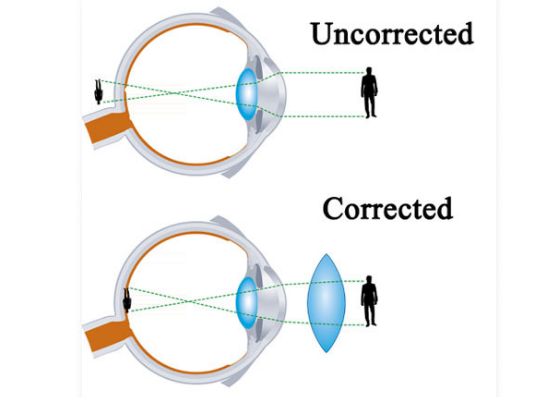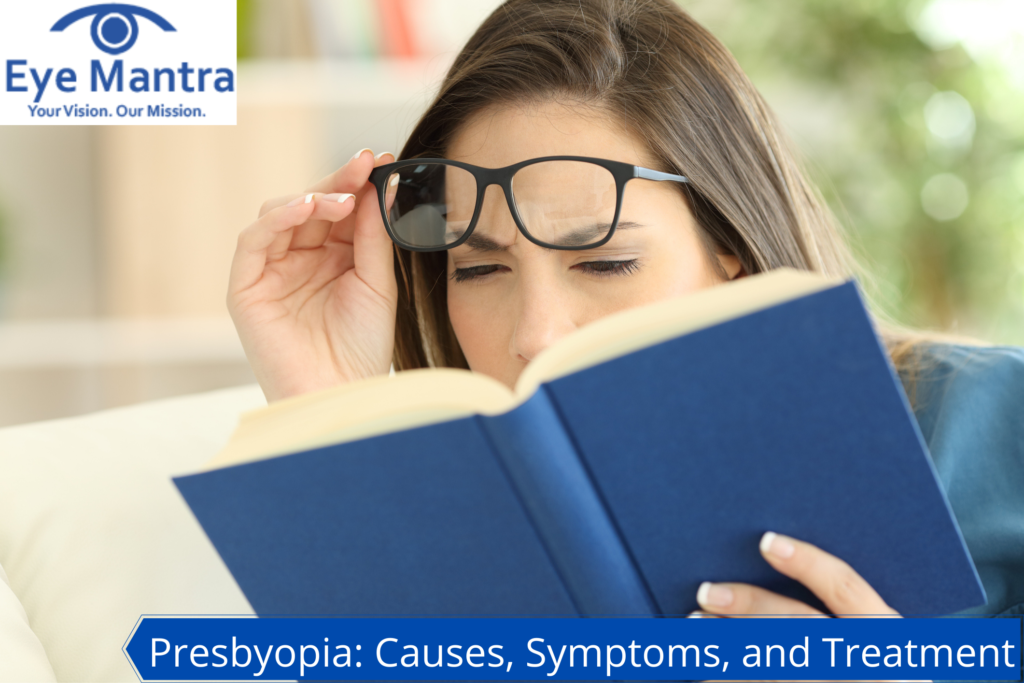Contents
What Is Presbyopia?
Presbyopia is the common loss of near-focusing ability that occurs with age. Most people notice the effects of presbyopia after age 40 when they start having difficulty seeing the small print. Eyecare in elderly people demands much more attention. One can’t escape presbyopia, even if they never had a vision problem before. Nearsighted people will notice that their near vision blurs when they wear their usual eyeglasses or contact lenses to correct distance vision. Though it is a natural change in our eyes, it is often a significant and emotional event. It is because it’s a sign of aging that’s impossible to overlook and difficult to hide.
Presbyopia is a simple type of vision disorder that happens as you age. It is often referred to as the aging eye situation. It results in the failure to focus up close, a problem connected with refraction in the eye.
Who Is At Risk For Presbyopia?
Anyone over the age of 35 is at risk. Everyone feels some loss of concentrating power for near things as they age. Some people will notice it early and some realize it later. But some will notice this more than others.

Causes of Presbyopia
Presbyopia happens naturally in people as they age. It may also be caused because of a lack of eye nutrition. The eye is not able to focus light directly on the retina due to the hardening of the natural lens. Aging also breaks muscle fibers around the lens making it more difficult for the eye to concentrate on up-close things. The ineffective lens causes light to concentrate behind the retina, causing blurred vision for objects that are up close. When you are younger, the lens of the eye is soft and flexible, providing the tiny muscles inside the eye to comfortably reshape the lens to focus on close and distant objects.
Symptoms of Presbyopia
When you become presbyopic, you either have to hold your smartphone and other gadgets and reading material (books, magazines, menus, labels, etc.) farther from your eyes to see them more clearly. Unfortunately, when you move things farther from your eyes they get smaller in size, so this is only a temporary and partially successful solution to presbyopia. If you can still see close objects moderately well, presbyopia can cause headaches, eye strain, and visual fatigue that makes reading and other near vision tasks less comfortable and more tiring.
Diagnosis of Presbyopia
Presbyopia is diagnosed by a basic eye exam, which comprises a refraction evaluation and an eye health exam. A refraction assessment decides if you have nearsightedness or farsightedness, night blindness, astigmatism, or presbyopia. Your doctor may use different instruments and ask you to see through different lenses to test your distance and close-up vision. Your eye doctor will put drops in your eyes to enlarge your pupils for the eye health exam. This may cause your eyes more light-sensitive for a few hours after the exam. Enlargement enables your doctor to more clearly view the inside of your eyes. It is recommended that adults have a comprehensive eye exam every:
- 5 to 10 years under age 40
- 2 to 4 years between ages 40 and 54
- 1 to 3 years between 55 and 64 ages
- 1 to 2 years beginning at age 65
You may need more regular exams if you have risk factors for eye disease or you need glasses or contact lenses.
Treatment For Presbyopia
There are various treatment options available to correct presbyopia, these include:
Eyeglasses
Eyeglasses with regular lenses are the most common solution for presbyopia for people over age 40. These line-free multifocal lenses restore precise near vision and give excellent vision at all distances. Another treatment choice is eyeglasses with bifocal lenses, but bifocals give a more limited range of vision for many people with presbyopia. It’s also common for people to notice they are becoming more sensitive to light and glare due to aging changes in their eyes.
Photochromic lenses, which darken automatically in sunlight, are a great choice for this purpose. Reading glasses are another choice. Unlike bifocals and progressive lenses, which most people wear all day, reading glasses are worn only when required to see close objects and tiny prints more clearly. If you wear contact lenses, your eye doctor can prescribe reading glasses that you wear while your contact lenses are in.
You may purchase reading glasses at an eyewear retail store, or you can get higher-quality versions prescribed by your eye doctor. Regardless of which type of eyeglasses you prefer to correct presbyopia, definitely consider lenses that include anti-reflective coating. Anti-reflective coating reduces reflections that can be distracting and cause eye strain. It also helps reduce glare and increase visual clarity for night driving.
Contact Lenses
People with presbyopia also can opt for multifocal contact lenses, available in gas permeable or soft lens materials. Another kind of contact lens correction is monovision. Under this one eye wears a distance prescription, and the other wears a prescription for near vision. Brain studies favor one eye or the other for various tasks. While some people are fascinated with this solution, others complain of reduced visual acuity and some loss of depth perception. Because the human eye change as you grow older, your glasses or contacts prescription will need to be increased over time as well. You can expect your eye doctor to prescribe a stronger correction for near work as you need it.

Surgery To Treat Presbyopia
If you don’t want to wear eyeglasses or contact lenses, several surgical options to treat presbyopia are available as well. One presbyopia correction procedure that’s gaining popularity is the implantation of a corneal inlay. Typically implanted in the cornea of the eye that’s not your dominant eye, a corneal inlay increases the depth of focus of the treated eye and reduces the need for reading glasses without significantly affecting the quality of your distance vision. The first step to examine if you are a suitable applicant for the surgery is to have a complete eye exam and a consultation with a refractive surgeon who specializes in the surgical correction of presbyopia.
We are all getting older, and we’re all going to have to deal with the effects of presbyopia. Whichever option you choose – eyeglasses, contact lenses, or surgery – you’ll be able to easily read closer materials. For getting a service for eye issues we have the best eye hospital Delhi and the best doctor. For receiving them log into our website EyeMantra. Our experts will take give all possible treatments to make your vision clear and you have a happy and peaceful life. We deliver various services like Computer Vision Correction, Paediatric Ophthalmologist, Specs Removal which can help in having good viewing power. For any service call us at +91-9711115191. You can also mail at [email protected]. Have a happy service experience with us!



